Nische
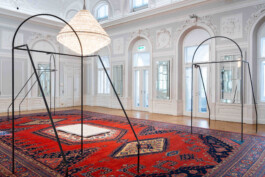
Installationview Nische
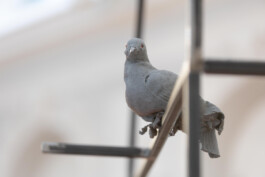
pigeon baby
latex, tin, acrylic glass, wadding


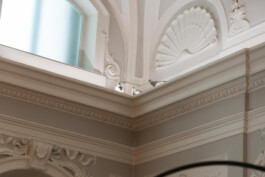
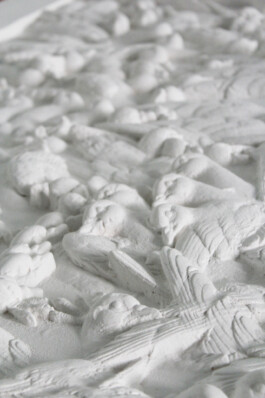
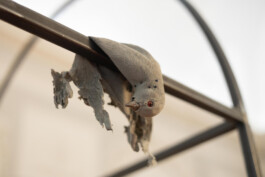
Potpuri
detail; gypsum
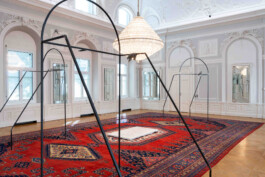
Golumben
metall
Potpuri
gypsum
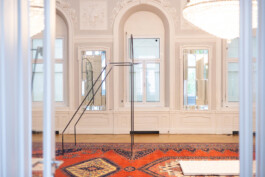


companions for the evening (schneck)
glazed ceramic

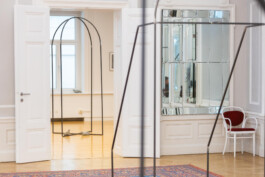
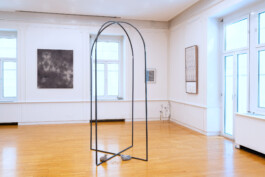
Installationview
Pavillon
metal

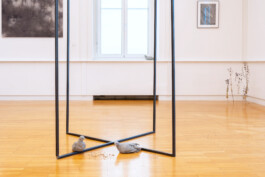
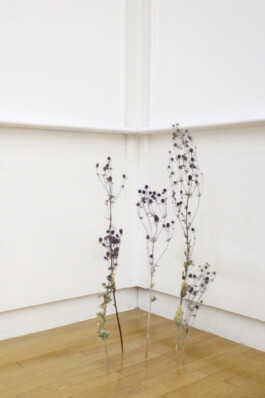
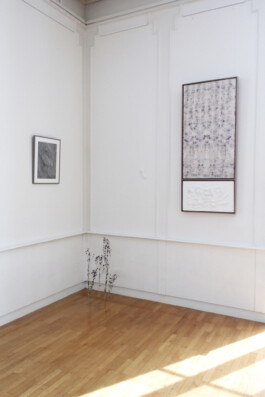
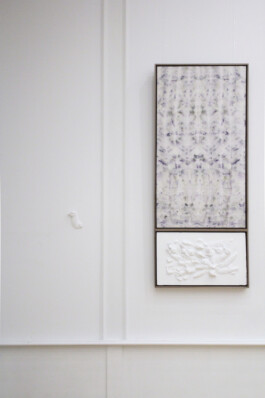
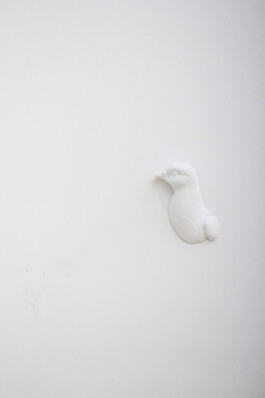
lucid dreaming pigeon
natural plant dyed cotton, gypsum, walnut wood
cher ami
gypsum
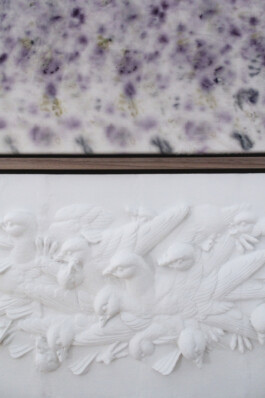

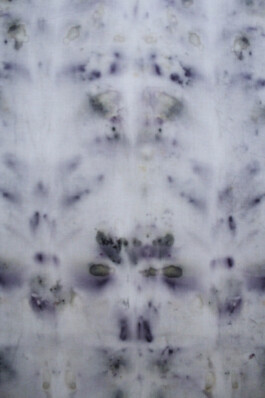
Girren, kirren, schmirren, gurren, kuttern, rucksen, kollern, gurgeln, treibrucksen, turteln, schnurren, ächzen, heulen, burren, klatschen, prasseln – the sounds of the pigeon are described in so many different ways. They are not only an expression of their existence, but also an echo of their role in urban ecology. For just as it sounds from the cracks and corners of the city, the real drama of urban life is revealed where humans do not look. The pigeon, often despised as the “flying rats”, does not stand for chaos in Eva Funk's work, but for resistance and resilience. In her installation in the Spiegelsaal in der Kärntner Landesregierung, Funk transforms the pigeon into a symbol of survival on the margins of society, both for animals and for people.
Sociologist Colin Jerolmack argues that the aversion to pigeons results less from their supposed uncleanliness than from the disruption of the idealized urban order. The pigeon contradicts the image of a clean, sterilized metropolis in which nature is tamed and pushed out of sight. It claims and conquers spaces that humans have reserved for themselves - visibly, in broad daylight. Unlike rats and cockroaches, which remain hidden, the pigeon lives openly in the busiest urban zones, breaking the illusion of control and order.
In the Spiegelsaal, an artistic intervention unfolds that makes this unease tangible. The hall, with its magnificent stucco work depicting regional symbols such as the Carinthian coat of arms and the Lindwurm, is enhanced by a new perspective. Eva Funk has adapted a large plaster relief to the size of an apparently empty space on the wall, thus finding a subtle response to the historical context of the room. Instead of floral ornaments and other heraldic elements, a flock of pigeons cavort here. The birds' bodies merge into one another and “glitches”, i.e. distortions, become visible. This almost monstrous-looking body draws attention to the ambiguous and human view of the cultural successors.
Eva Funk often works with the historical and cultural contexts of different places to create installations and interventions that reflect and challenge these contexts. In the Hall of Mirrors, she combines traditional and contemporary elements to create a dialog about the relationship between humans and nature. Her works challenge viewers to re-evaluate the often overlooked aspects of their urban environment and to confront the question of who really owns the city. She succeeds in commenting on the often overlooked aspects of life and explores the ambivalence between care and control, instinct and manipulation through these human-animal relationships.
By the way: other birds also have many different names for their vocalizations. Ächzen, however, is something only the pigeon does besides humans.
Translated with DeepL.com (free version)
Installation, artistic intervention
Spiegelsaal, Kärntner Landesregierung
Klagenfurt am Wörthersee, Kärnten
2024